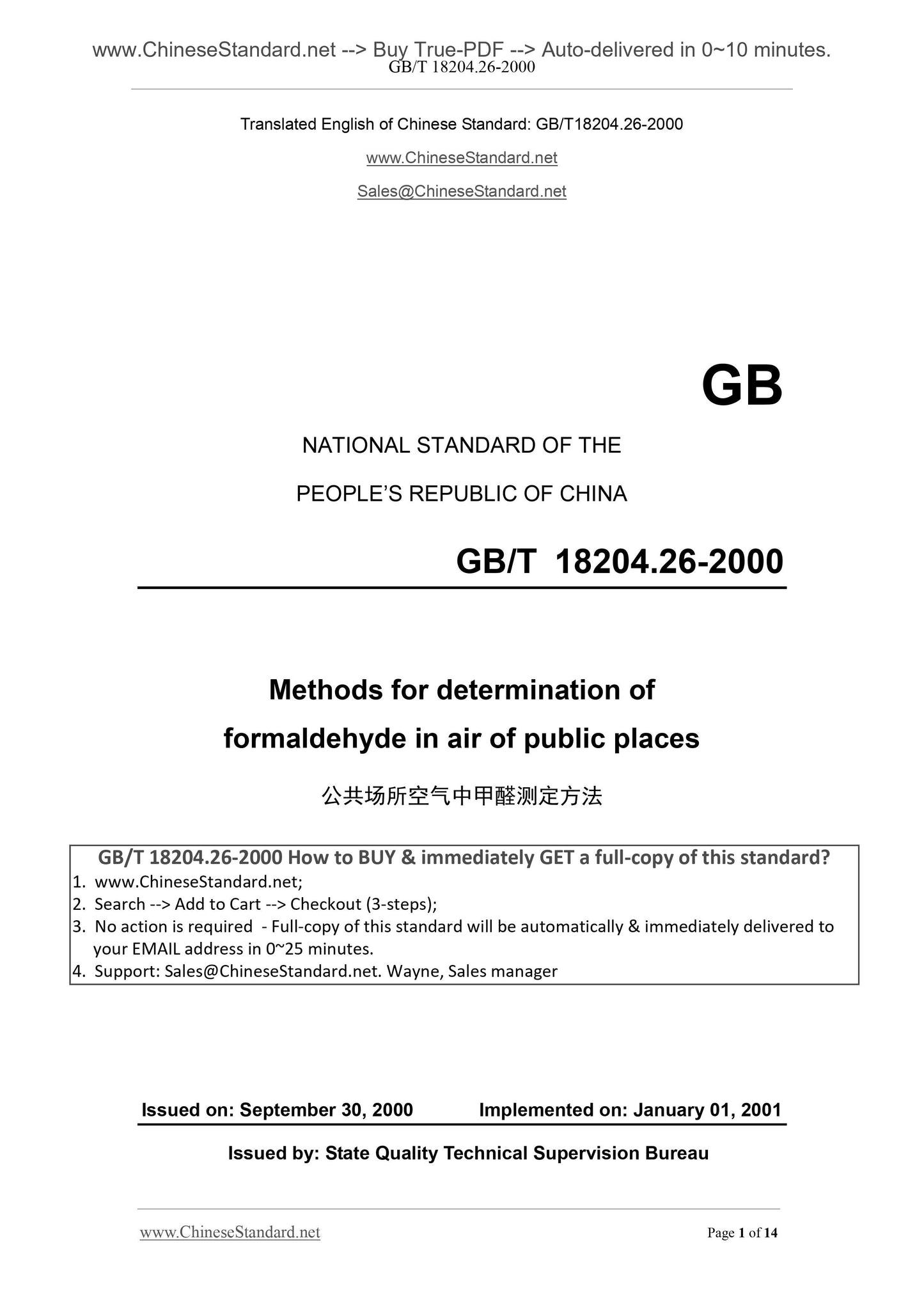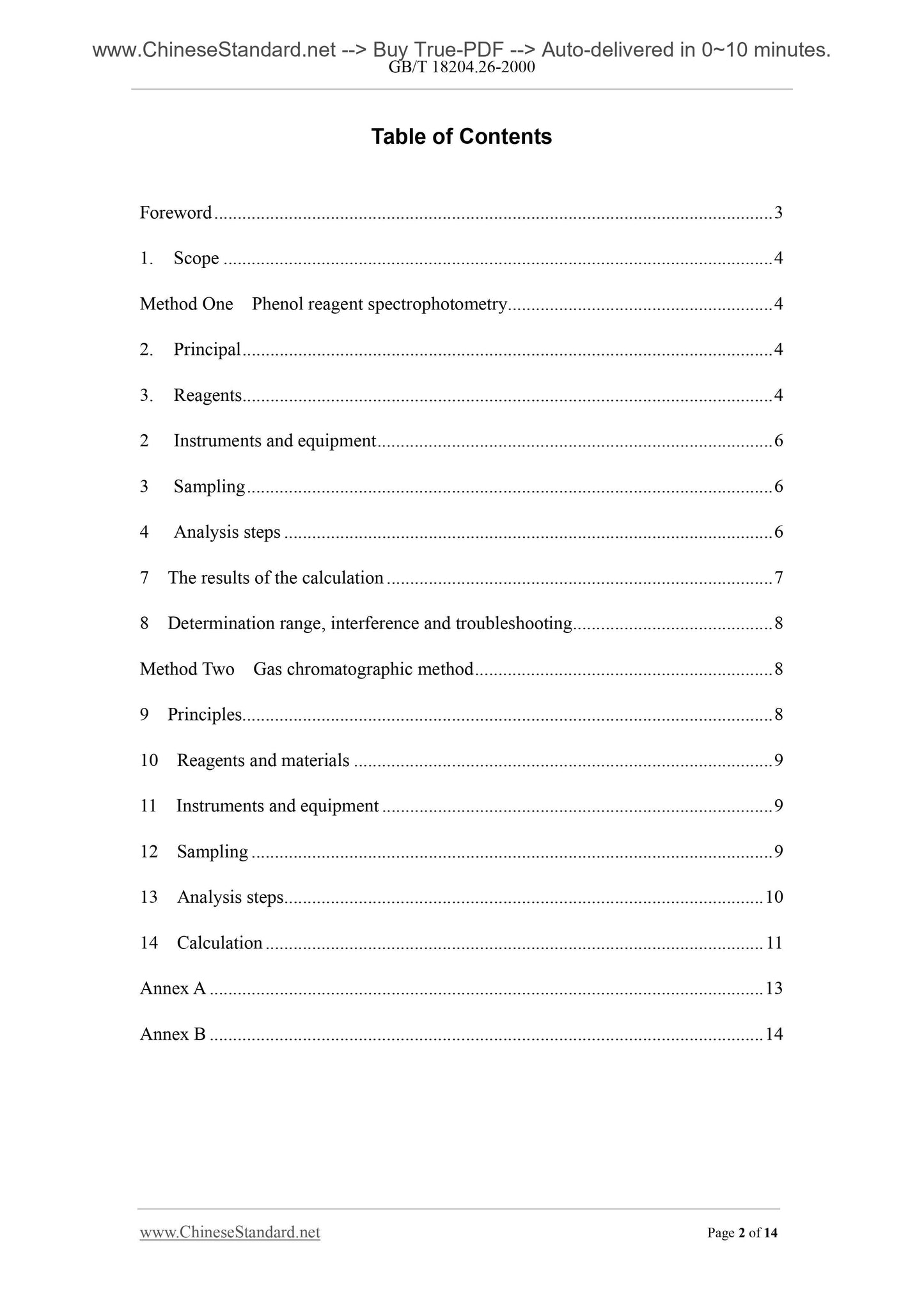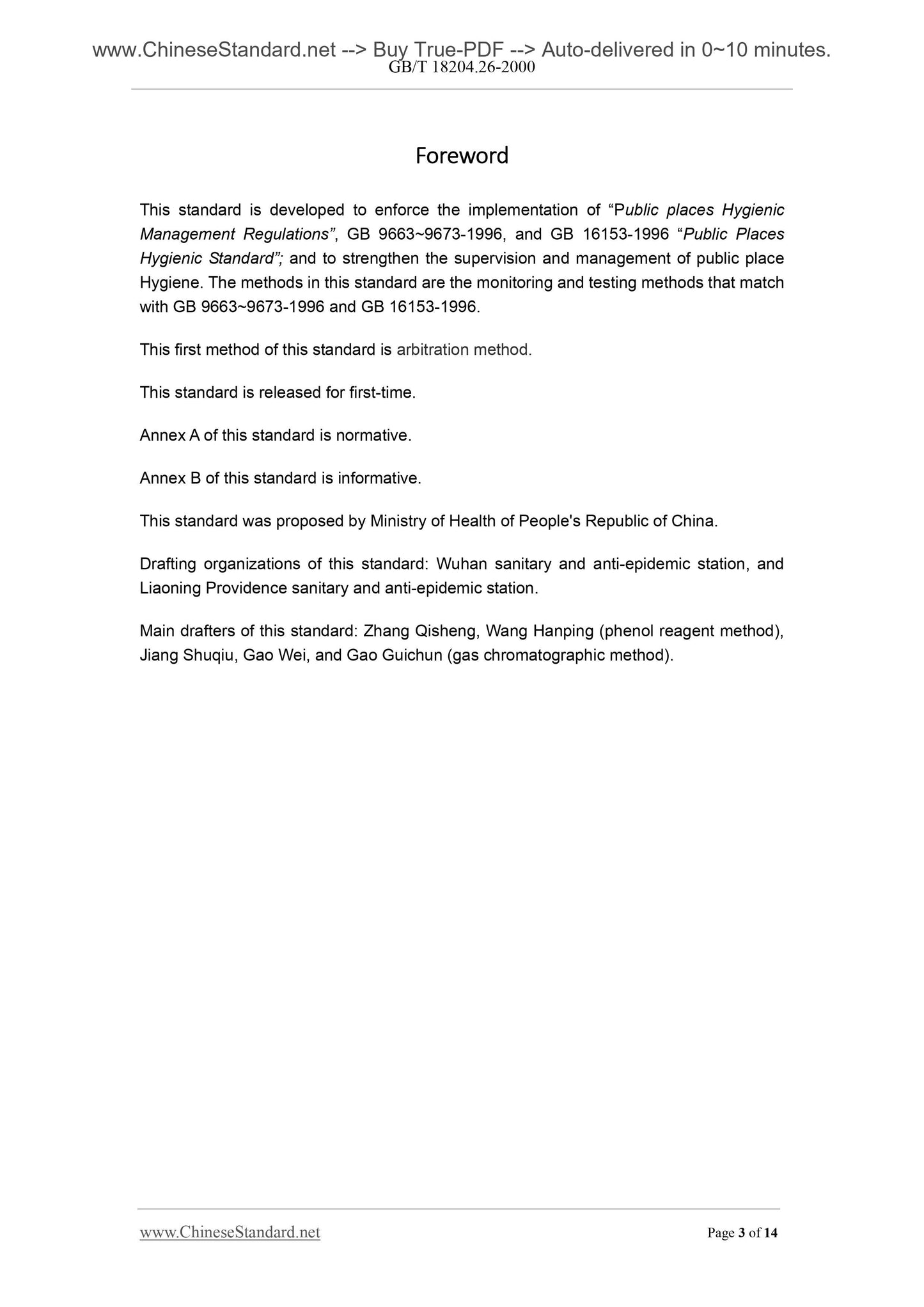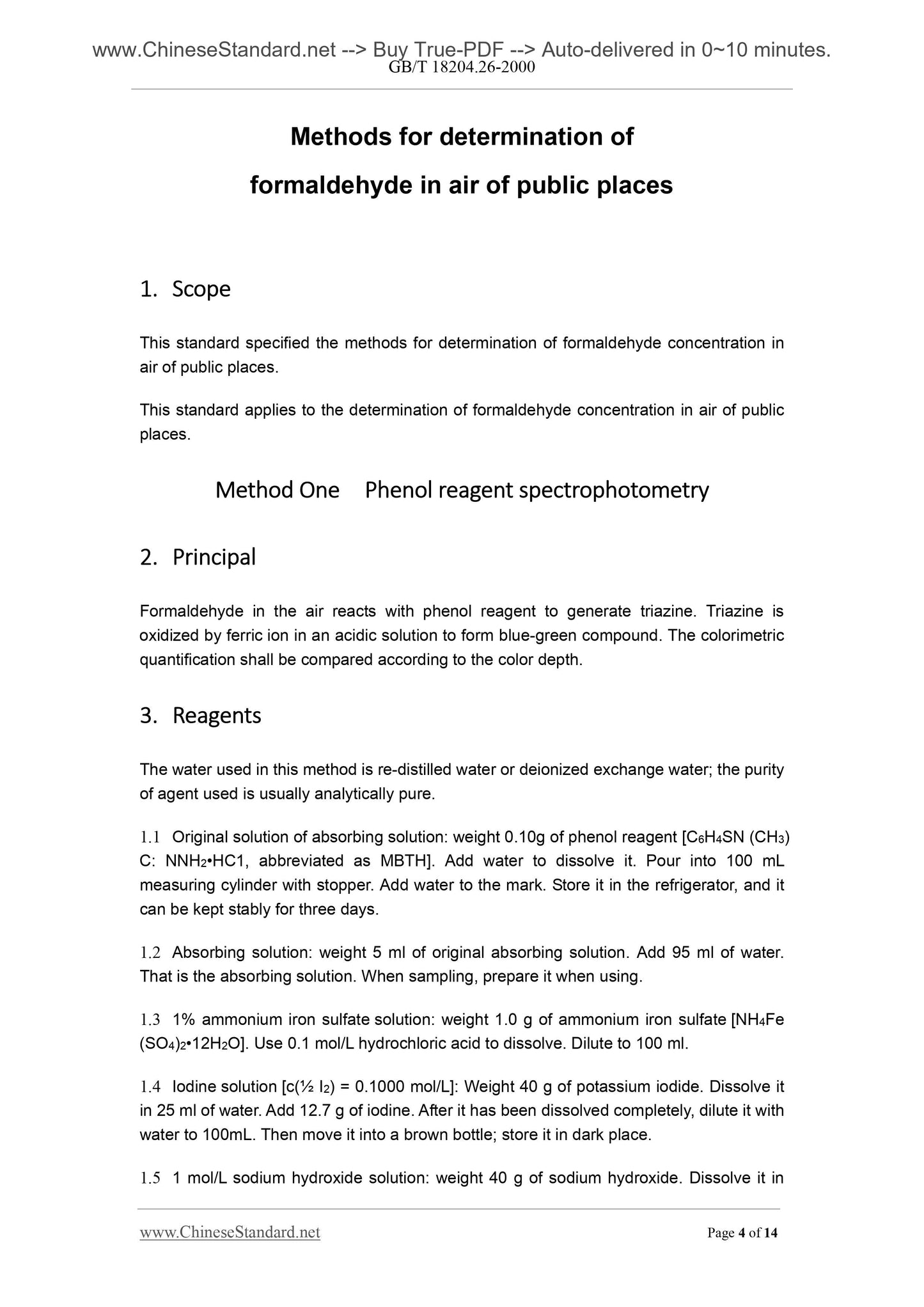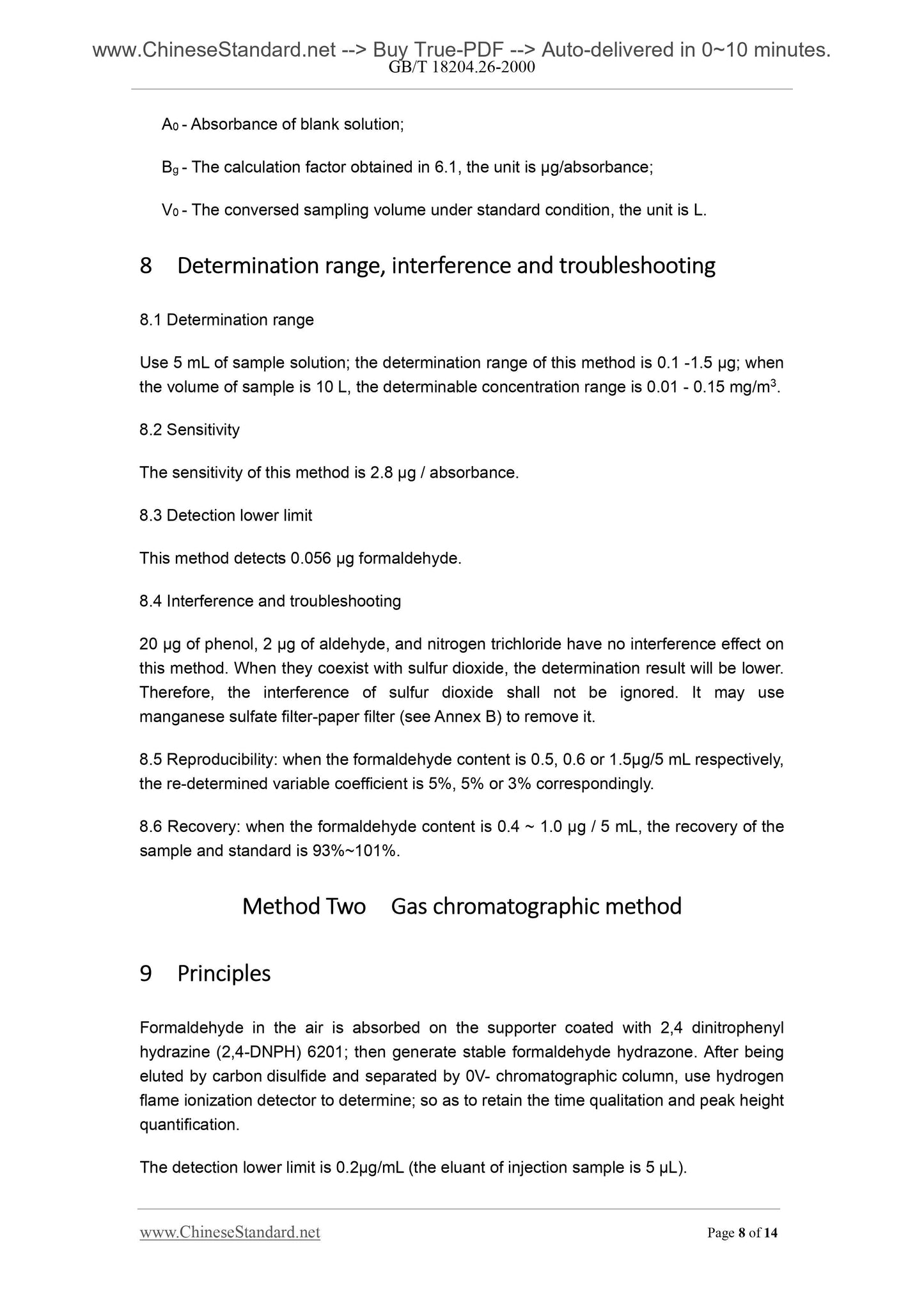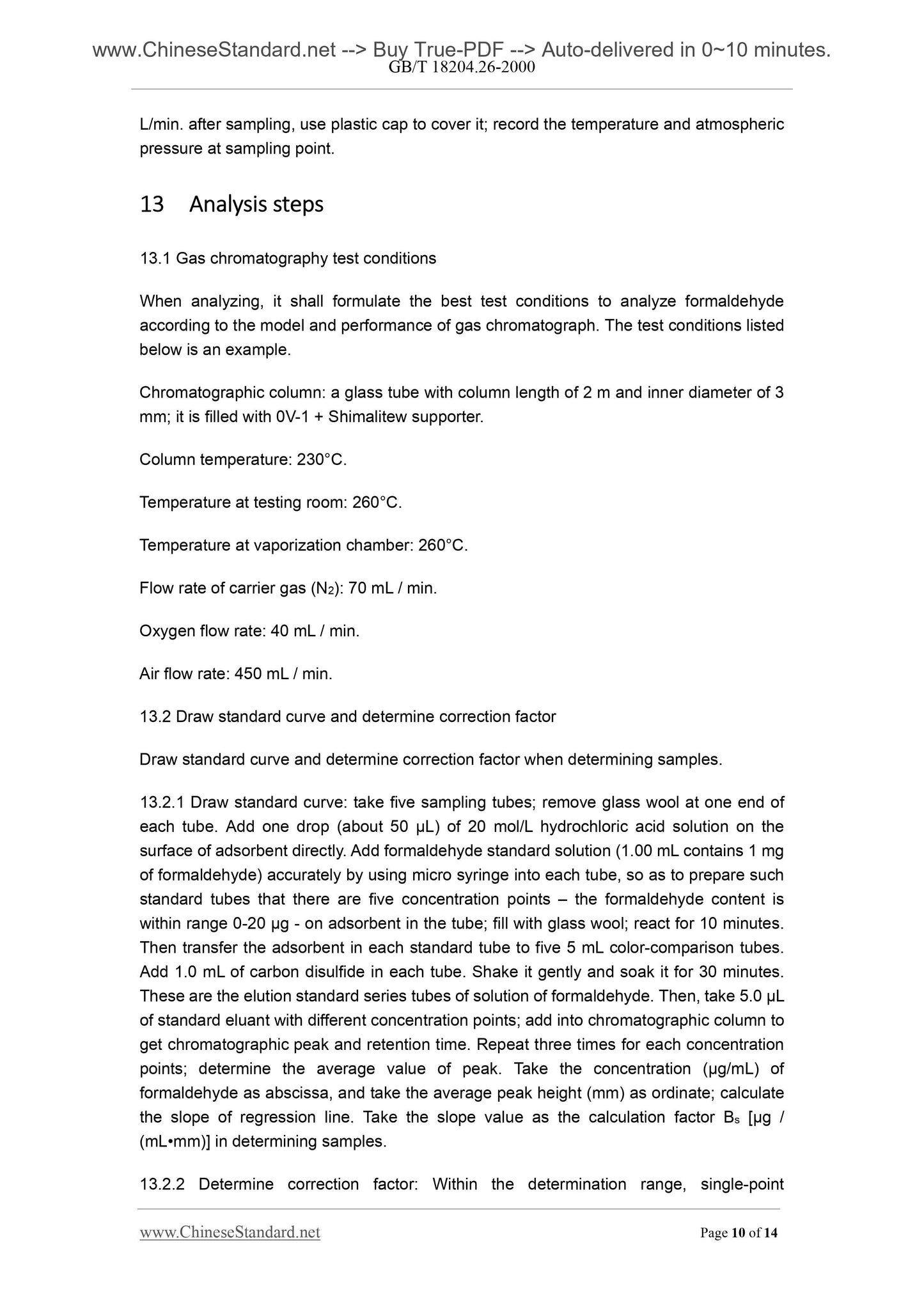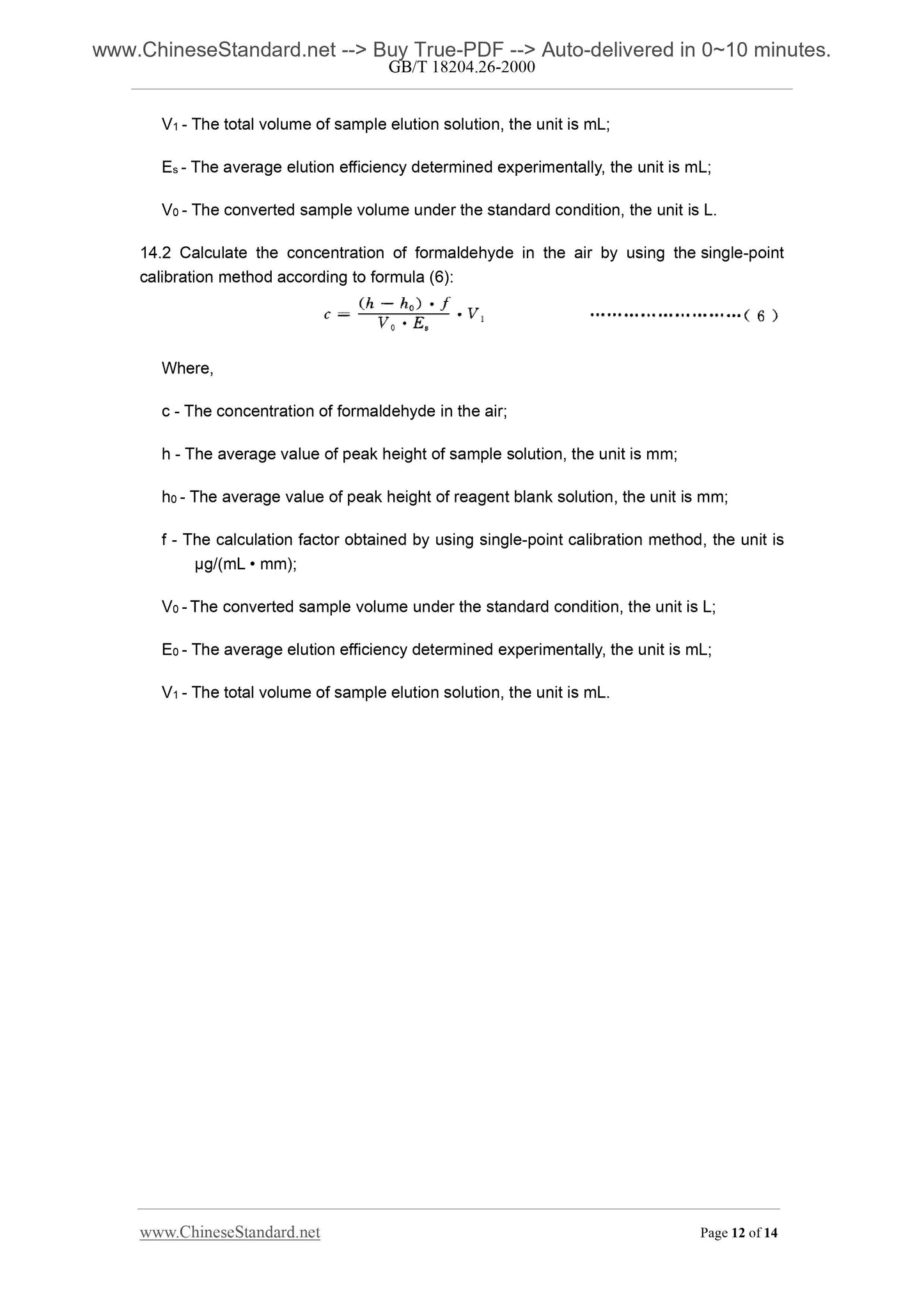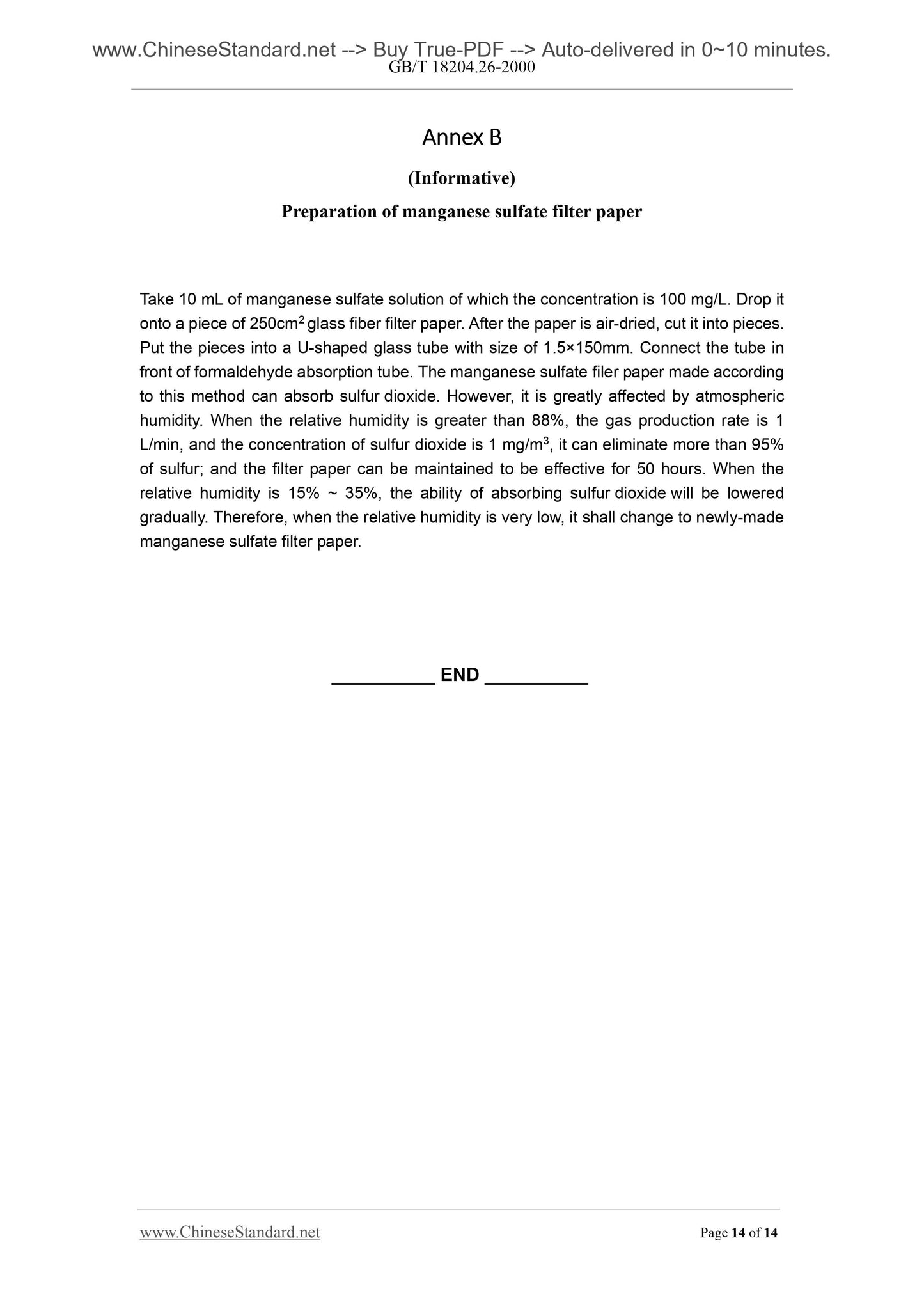1
/
of
8
www.ChineseStandard.us -- Field Test Asia Pte. Ltd.
GB/T 18204.26-2000 English PDF (GB/T18204.26-2000)
GB/T 18204.26-2000 English PDF (GB/T18204.26-2000)
Regular price
$70.00
Regular price
Sale price
$70.00
Unit price
/
per
Shipping calculated at checkout.
Couldn't load pickup availability
GB/T 18204.26-2000: Methods for determination of formaldehyde in air of public places
Delivery: 9 seconds. Download (and Email) true-PDF + Invoice.Get Quotation: Click GB/T 18204.26-2000 (Self-service in 1-minute)
Newer / historical versions: GB/T 18204.26-2000
Preview True-PDF
Scope
13.1 Gas chromatography test conditionsWhen analyzing, it shall formulate the best test conditions to analyze formaldehyde
according to the model and performance of gas chromatograph. The test conditions listed
below is an example.
Chromatographic column. a glass tube with column length of 2 m and inner diameter of 3
mm; it is filled with 0V-1 + Shimalitew supporter.
Column temperature. 230°C.
Temperature at testing room. 260°C.
Temperature at vaporization chamber. 260°C.
Flow rate of carrier gas (N2). 70 mL / min.
Oxygen flow rate. 40 mL / min.
Air flow rate. 450 mL / min.
13.2 Draw standard curve and determine correction factor
Draw standard curve and determine correction factor when determining samples.
13.2.1 Draw standard curve. take five sampling tubes; remove glass wool at one end of
each tube. Add one drop (about 50 μL) of 20 mol/L hydrochloric acid solution on the
surface of adsorbent directly. Add formaldehyde standard solution (1.00 mL contains 1 mg
of formaldehyde) accurately by using micro syringe into each tube, so as to prepare such
standard tubes that there are five concentration points – the formaldehyde content is
within range 0-20 μg - on adsorbent in the tube; fill with glass wool; react for 10 minutes.
Then transfer the adsorbent in each standard tube to five 5 mL color-comparison tubes.
Add 1.0 mL of carbon disulfide in each tube. Shake it gently and soak it for 30 minutes.
These are the elution standard series tubes of solution of formaldehyde. Then, take 5.0 μL
of standard eluant with different concentration points; add into chromatographic column to
get chromatographic peak and retention time. Repeat three times for each concentration
points; determine the average value of peak. Take the concentration (μg/mL) of
formaldehyde as abscissa, and take the average peak height (mm) as ordinate; calculate
the slope of regression line. Take the slope value as the calculation factor Bs [μg /
(mL•mm)] in determining samples.
13.2.2 Determine correction factor. Within the determination range, single-point
V1 - The total volume of sample elution solution, the unit is mL;
Es - The average elution efficiency determined experimentally, the unit is mL;
V0 - The converted sample volume under the standard condition, the unit is L.
14.2 Calculate the concentration of formaldehyde in the air by using the single-point
calibration method according to formula (6).
Where,
c - The concentration of formaldehyde in the air;
h - The average value of peak height of sample solution, the unit is mm;
h0 - The average value of peak height of reage...
Basic Data
| Standard ID | GB/T 18204.26-2000 (GB/T18204.26-2000) |
| Description (Translated English) | Methods for determination of formaldehyde in air of public places |
| Sector / Industry | National Standard (Recommended) |
| Classification of Chinese Standard | C51 |
| Classification of International Standard | 13.020 |
| Word Count Estimation | 7,796 |
| Date of Issue | 2000-09-30 |
| Date of Implementation | 2001-01-01 |
| Issuing agency(ies) | State Quality and Technical Supervision |
| Summary | This standard specifies: the concentration of formaldehyde in the air in public places determination. This standard applies to: the concentration of formaldehyde in the air in public places determination. |
Share
